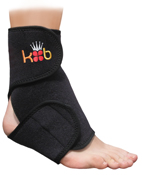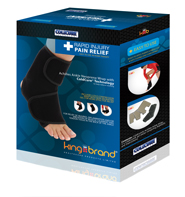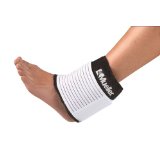What To Look For In A Cold Pack
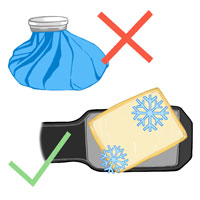
Having lots of gel packs and ice wraps out in the market it's hard to decide ultimately which is the best product for your needs. Everyone claims to have the best gel pack out there, that's superior to anyone elses, and they list all of the positive attributes that coincide with their wraps. To help consumers purchase exactly what they are looking for, this page has been created to list all of the qualities that people look for in an ice pack and we will help explain further, what to look for and what to stay away from. Take a look at our collection of the most popular ankle ice packs, and what we thought about them when we took them for a test spin. Click here for ratings on Ankle Cold Wraps.
Comfort
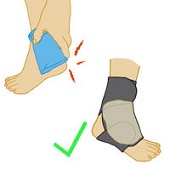
It's an ongoing battle to find a comfortable pair of shoes for your feet, and the same should be done when looking for a gel pack or ice wrap for your foot. No matter whether the injury is small or large, comfort is very important. Having a wrap that fits like a glove and has a gel pack that will target the injury area without having to hold it in place is something that should be on the top of the list when it comes to purchasing a wrap for your injured foot.
Coverage Area
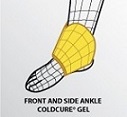
Having an improperly sized ice pack is not soothing. When an injury has occurred ice can be very soothing on the injury, but if the ice wrap goes too far past the injury site onto the un-injured skin it can be uncomfortable. Finding a gel pack that will fit your specific injury will give you the best chance in healing your injury faster.
Longevity Of Cold
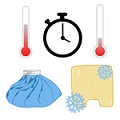
An ice wrap should last no longer than 20 minutes, for proper cold compression therapy. Look at reviews online to see what other people say about the quality and length of cold each gel pack has. This will better prepare you for what to expect when using the gel pack.
Firmness When Frozen
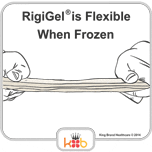
Firmness is very important when talking about rapid injury healing. Having a nice firm gel pack will ensure that you won't get any hot spots thoughout the duration of your treatment. A gel pack should be nice and firm, but also be able to form to the shape of your foot. The foot is a complex shape, and without flexibility the cold therapy treatments won't be nearly as effective unless it's formed to the shape of your unique foot.
Reusable vs Disposable
There is a time and place for both types of cold packs. The disposable cold packs that are out there are stored at room temperature and go through a chemical reaction when broken. They use an endothermic reaction between water and ammonium nitrate to achieve cool temperatures rapidly. While this is convenient during an emergency situation, it is very expensive to maintain.
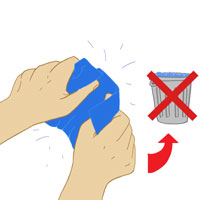
Reusable gel packs are stored in the freezer and can be ready in as quickly as a half an hour. If cold therapy is prescribed, having reusable gel packs in the fridge are highly recommended to cut down cost, and storage space. The quality of the reusable gel packs are much better as well because they've been designed with repetitive use in mind and therefore often get more targeted even cooling than with the disposable gel packs.
Thickness of Gel Pack
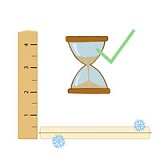
Having a thick gel pack is important to help lock the cold inside, so you can reach the end of your 20 minute treatment with a gel pack that's still cold. Look for a gel pack that's atleast half an inch thick, this will ensure that there is enough gel to keep the injury cool. The thicker the gel pack the longer the cold will last. Remember to look for something that's also flexible.
Multiple Gel Packs
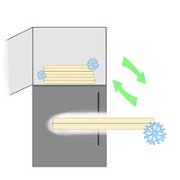
When treating an injury, cold reduces inflammation. The quicker you apply cold to an injury, the quicker it will start to heal. Doing treatments with gel packs out of the freezer is one alternative to get rid of inflammation, but with multiple gel packs that have been cooled in the fridge, you can do continuous treatments without taking a break. Looking for a gel pack kit that has multiple gel packs in it will help reduce inflammation a lot quicker.
Additional Reading and Links
Copyright 2011-2025 King Brand Healthcare Products® Limited. All Rights Reserved.
Meniscus Injury Treatment,
Muscle Injury Treatment,
Neck Injury Treatment,
Plantar Fasciitis Injury Treatment,
Shoulder Injury Treatment,
Tendon Injury Treatment,
Wrist Injury Treatment,
BFST Wraps,
Blood Flow Stimulation Medical Devices,
Blood Flow Stimulation Therapy,
Blood Flow Stimulation Wraps,
LCL Injury Treatment,
MCL Injury Treatment,
ACL Injury Treatment,
PCL Injury Treatment.
Copyright 2011-2014 King Brand Healthcare Products® Limited. All Rights Reserved. King Brand
® ColdCure
® Cold Therapy ice packs and gels are the best solution to your ankle soft tissue injury. King Brand
® ColdCure
® RigiGel
® Ankle Wraps hold the cold longer, stay in place and are safer than any other product. Treat your ankle pain with King Brand
® for the best results.










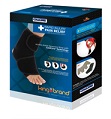 $50.99 - $54.95
$50.99 - $54.95








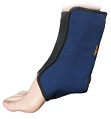 $24.99 - $29.95
$24.99 - $29.95






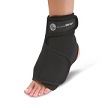 $29.95 - $75.33
$29.95 - $75.33




 $29.95 - $75.33
$29.95 - $75.33




 $30.40 - $78.57
$30.40 - $78.57










